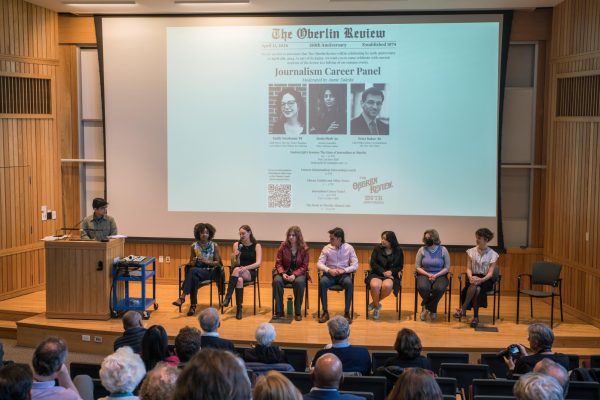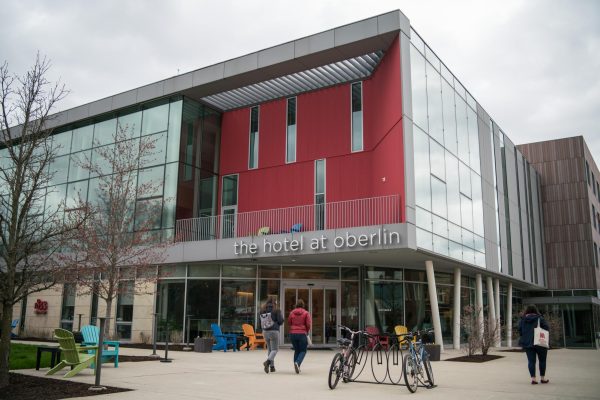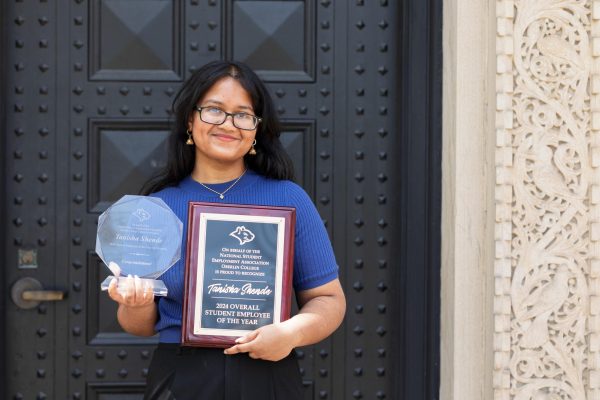Ecolympics Returns to Campus With New Campaigns
After a five-year hiatus, the Oberlin Ecolympics — an annual two-week community competition and event series aimed at reducing emissions and raising environmental awareness — will kick off on April 10 with a rock painting and pledge card signing event in Tappan Square. Spearheaded by the Office of Environmental Sustainability, the Ecolympics’ main fixture will be separate competitions among Oberlin College dorms, Oberlin Public Schools, and various public buildings around Oberlin, to see who can reduce the most water and electricity over the Ecolympics’ duration.
OES will also be hosting a series of other events as part of Ecolympics, including tours of local environmental infrastructure, workshops for making dryer balls and utensil holders, and an opportunity to compost food at Stevenson Dining Hall.
Along with these events, there will be a “Poop Campaign,” where on select days, students and community members are invited to use bathrooms in the Adam Joseph Lewis Center for Environmental Studies to help feed the Living Machine, a system that mimics wetlands to filter wastewater. Participants will tally the number of times they make a donation, and whoever donates the most will have the opportunity to be featured in Big Parade.
There is an additional community-wide goal of reducing electricity consumption by 10,000 kilowatt hours and water consumption by 10,000 gallons.
Progress will be tracked in realtime on the Oberlin Environmental Dashboard — a system that collects information about
campuswide resource usage.
Heather Adelman, sustainability manager of OES, explained that the community-wide goal is a crucial addition to the Ecolympics to help foster a more inclusive atmosphere.
“Due to ongoing construction with some of the electricity and water meters in certain buildings, not all dorms will compete individually but instead will help work towards this broader community goal,” Adelman wrote in an email to the Review.
According to double-degree second-year Sophie Griffith-Oh, who works as an intern in the OES, one of the significant challenges related to this event has been raising public awareness. She identified a general sense of resignation that many Oberlin
students feel when it comes to environmental activism.
“Even once I was involved in this project, I felt a little bit skeptical,” Griffith-Oh said. “There is this attitude of ‘I can’t make a difference, I’m just one person. It’s the companies that are at fault.’”
Ecolympics was the brainchild of Paul Sears Distinguished Professor of Environmental Studies and Biology John Petersen, OC ’88, whose background in systems ecology helped guide him in its development. He pioneered the Oberlin Environmental Dashboard, which allowed the competition to take place.
“Everyone needs a sense of self-efficacy — the understanding that their actions can actually have a measurable and significant impact on the world around them,” Petersen said. “But dorms have many students living in them, all of whom are making decisions about water and electricity use. The challenge with the Ecolympics competition is that you have to have a critical mass of people in a dorm working and strategizing together to conserve these resources before you will actually be able to measure and see the reductions. That is why collective engagement [and] excitement of the whole dorm are so important to success. But this is
really the way the world works too — unless we get our s**t together on a community level, individual action won’t be enough to solve problems like climate change.”
Petersen emphasized that he thinks that Oberlin’s slogan, “Think one person can change the world? So do we,” can be misleading when it comes to this competition.
“I love the sentiment of self-efficacy embodied in [the slogan]. But I also think it is off base. It has always been through working as a community for collective action that Obies and others have positively changed the world.”




